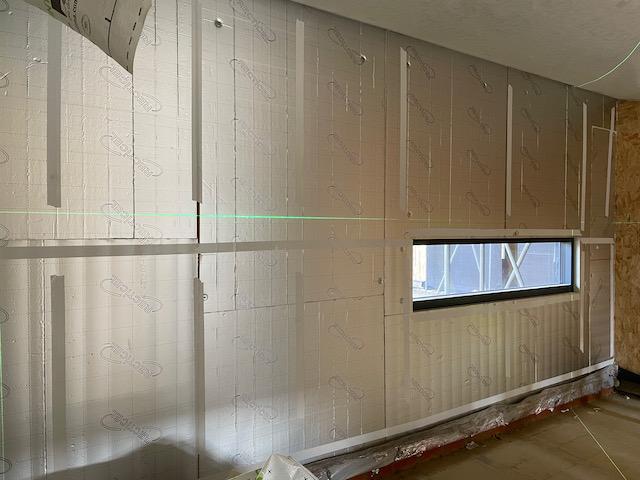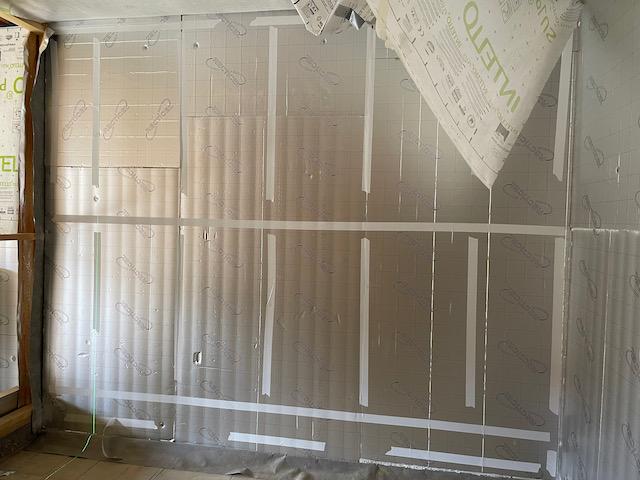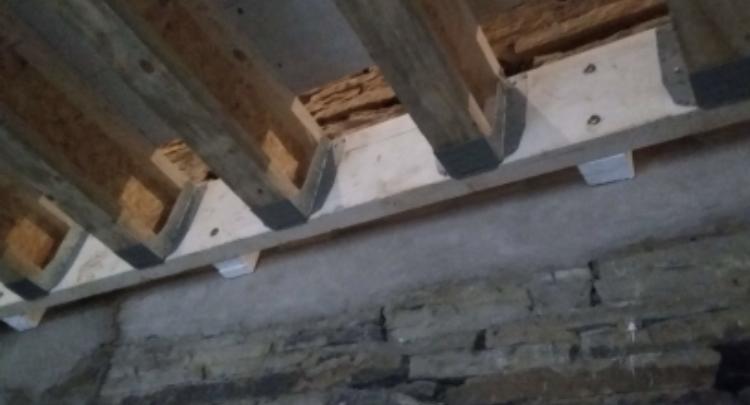Leaderboard
Popular Content
Showing content with the highest reputation on 03/07/22 in all areas
-
From the discussions we've had so far, the 3 build systems all end up costing roughly about the same. This is not from personal experience, but having spoken to at least a dozen different companies in the last 2-3 months which included traditional builders, TF and ICF suppliers. The shell of the building is only about 20-25% of the cost, and they will all roughly come in at a similar level. Where parts are cheaper, it will be balanced out by higher labour costs (brick and block), and where parts are more expensive - the speed to put that up is higher and hence labour costs are cheaper (timber frame). ICF seems to sit in the middle for both though the advantage with TF and ICF suppliers seems to be that they are willing to quote from planning drawings rather than wait for building regs drawings.2 points
-
2 points
-
get the fabric right from the off and put basic kitchen/bathrooms etc in to start with and then upgrade them to more 'top-end' if you want at a later date when you have more disposable income. you can easily change wall coverings/kitchens/bathrooms etc but it's not easy to add more insulation!2 points
-
who gives a feck what they look like if they save your life?2 points
-
I looked and had quotes from 4 different TF company's solo, English Brothers , Fleming and MBC . the one thing to be mindful of is whilst they all supply and build a timber framed shell they varied in quality, cost what was included and what was extra so much it made comparing like for like quite a challenge . The best performing was MBC and also the most expensive by some margin, Solo was the cheapest but the worst performing unless you start to add in the extra insulation upgrades, English Brothers seemed to offer the best compromise between cost and quality with Fleming not far behind.1 point
-
MBC timber frame seems to get a regular mention on here. I’ve spoken to them on the phone, quite responsive to my queries though I’m still waiting for the official quote to arrive.1 point
-
I really like this! The covered walkway is a nice touch also. I’m planning something similar with a useable storage space above.1 point
-
1 point
-
It is a structural raft and forms the entirety of the foundation. There is additional thickness & strengthening around the perimeter and where the point loads of the structure above require it. The EPS acts as formwork and insulation, it is specced to take the load of both the slab and structure above without deformation. Additional benefit is that the UFH pipes are tied to the mesh and therefore the traditional 'on slab' insulation & screed is not required. Some have been able to power-float the slab post pour and use that as the finished surface.1 point
-
1 point
-
Chapter and verse (says he the most inexpert of experts). In short, no BS stamp, its not up to standard.1 point
-
1 point
-
The 20mm system will be loosing 2.2 W per degree per meter, you'll be loosing about 0.1 W. So it's not that good.1 point
-
I use m16 threaded bar resin anchored into the blockwork every other joist spacing. A small chase out of the blockwork would work but as you need to Parge the wall you would need to have your pipes in place. I’m sure I read somewhere about people using airtightness paint in their chases before running cables ect.1 point
-
Usually only doubled up at the bottom courses but time will tell!1 point
-
Thats pennies. Get it done.... I'm currently staring £4-7k in the face as I'm well on with the build. Ay 1500 buy it and do not hesitate.1 point
-
Visual impact of the lesser diameter vs nearly the same depth = a smoke detector that does look like it sticks out a lot more as the shape doesn’t lend itself to being inconspicuous imho. Forst glance and I thought “ceiling tit”. Aico for me still, sorry, but thanks for the alternative suggestion.1 point
-
???? Cavius = 97mm diameter by 52mm height (volume = 384,311 mm3) aicos = 150mm diameter by 66mm (volume 1,166,316mm3). So the Cavius is less than 3 times smaller than the aicos1 point
-
I’m spending a small fortune on a sprinkler system, so I doubt it would ever get anywhere near as bad. Also, downstairs there would still be 3 smoke alarms, I’m just wondering if in the main lounge area I can swap the smoke alarm for a heat alarm, so that the open plan area was mainly served by heat alarms rather than smoke alarms.1 point
-
I went with Scotframe their engineers specifies straps to slab, and soil investigation company and structure engineer specified raft foundation with enough steel to build a battle ship I was really interested is a insulated slabs as a few on hear have done but non of my professionals had worked with them so went with traditional.1 point
-
Yes @Temp I would expect all modern inverters to have MPPT (Maximum Power Point Tracking) as significant conversion efficiency gains are available by optimising the load presented to the PV modules. It's also the process that allows us great flexibility in choosing our PV modules and the number we use. It's quite a fascinating design challenge - measuring the power being transferred is as simple as measuring the voltage (V) at the input of the inverter along with the current (I) flowing in. But then what do you do with the measurements? Power is V*I and, in the case of the inverter, can be changed by controlling the load impedance presented by the conversion stage. If the load presented by the DC to AC converter is started off at a high impedance and gradually reduced while monitoring V*I the power should increase up to some maximum point then begin to fall off again as current continues to increase but the PV voltage falls. The MPP has therefore been found. The trickier bit lies in the algorithm that adapts this process to the dynamics of numerous variables like the radiant energy being absorbed and other factors that affect this such as shading and temperature. I had a go at designing one for the PV/battery combo I use to power my garden lighting and the best I could come up with at the time was to hunt up and down, constantly going past the MPP in each direction to achieve a good average but then all kinds of finer tuning has to come into play to manage situations such as sudden loss of power due to passing clouds. All good fun though.1 point
-
Hope this gives you some pointers. Lets start with the abbreviation.. ICF.. insulated concrete formwork. For walls the insulating blocks act as a shutter (formwork) to hold the wet concrete in place while it sets and then cures. The blocks themselves for walls make no contribution to the structural stength of the concrete wall. The choice of insulating wall medium has no bearing on the strength of the wall to resist the vertical an horizontal loads. The choice of block has no real bearing on the amount of rebar you need in the walls. Not quite, but let's keep it simple for general costing purposes for now. Some complex behavoir can happen at the bottom of the wall, depends on how and if it (the wall) is positively fixed to the floor slab. However it when it comes to the floor slab things change a lot. If your insulating blocks go down the walls and continue under the structural floor slab then the building is supported by the insulation, which rests on the ground below. What SE's do to design this is to look first at the ground.. how squashy is it, one property they look at is it's elastic modulus... a property of squashyness! Next step is to look at the insulating blocks.. how squashy are they. Hopefully you as an SE find the insulation is more squashy than the ground below. If so plane sailing. You design for the most squashy layer which is the insulation, there are other methods but this is the most common and practical for domestic design. Thus if you have an ICF block rated at 300 kPA at 10% compression (30 tonnes per square meter at 10% compression) you first say how thick is the insulation? Say 300mm thick so 10% of 300 = 30mm settlement to get your 300 kPa out of it. Now 30mm settlement is too much to tolerate normally. Also, you may have insulation that creeps a bit over 25 -50 years.. bit of a worry. Lets go for a figure of 2% compression and see what load we can put on the ICF blocks. Thus 300 * 2% / 10% = 60 kPa = ~ 6 tonnes per square metre all nicely spread out. Closer but we need to watch out for point loading and so on. Now there are many ways of carrying out the next steps to determine the shape and form of the supporting slab that sits on the insulation. But basically you strike a balance between the thickness of the floor slab and the amount of rebar you chuck at it. The easy way to get your head around this is to think about a bending a ruler. If you do so the top is in compression, the bottom in tension. Thus the thicker the ruler the less force on the tension side. Now concrete is good in compression but poor in tension so we use steel bars which are bonded into the concrete to resist the tension force. Thus for your ICF floor slab if you make it a bit thicker you'll often need a bit less rebar. But there is no free lunch as you'll need to pay for a bit more concrete. But the secret is often in reducing labour steel fixing cost, reducing complexity and avoiding on site errors. Lastly designing a ground bearing slab on ICF is not the same as designing a concrete slab that you may see in a multi storey carpark. The slab interacts with the ICF and ground below and thus the design approach is different. In summary @Ben100 if you choose a higher stength insulation under your floor slab you'll maybe use a bit less rebar and concrete, but you'll lose some of the insulation properties so will then need to make it (insulation) thicker to achieve the same u value.. and making it thicker will result in more movement.. who said self building was not fun! The best advice I can give is to seek out the most practical and buildable solution for you. Always start with the simple stupid. See how much that costs and then if you have spare cash explore further. Your simple stupid option is your bench mark. The weight of steel you need will much depend on your slab and another of other factors. To get the best out of this you'll need to post some pretty comprehensive drawings so folk can see what you are proposing. All the best.1 point
-
Find another structural engineer. if they don’t know it they will just over engineer everywhere and cost you a fortune. ask your Icf supplier for an engineer. if they cannot tell you a good one then I would choose another Icf supplier. simple really.1 point
-
WARNING I will be starting a thread soon on DIY installation of PV!! 🤞1 point
-
We're in the middle of building with thin joint masonry (so as quick and airtight as masonry can be), facing stone outer. While it *can* be neater, quicker, etc. it still relies on messy trades, and frankly their attention to detail is just not good enough for a high performance house, so unless you're there all day everyday on the details or doing it yourself, I think you'll be disappointed. I would 100% not do it again, and would go for timber frame all day long, whether clad, rendered or even with stone/brick outer. I would probably get a package company for a foundations + frame/shell build such as MBC. We got them to quote and looked into it in detail, but (unfortunately) stuck with masonry. I have no views on ICF as have no experience of it, but suspect the insurance/mortgageability is still trickier than timber frame.1 point
-
MVHR. Will really help with your SAP calcs too and far better air quality than trickle vents.1 point
-
Thanks, just checking terminology, as 'raft' to me is a thickish slab with 2 layers of heavy reinforcement. Yes, tying the UFH down to mesh is a bonus....once had a plumber insist on pouring his own screed and it got under the PIR which floated.0 points
-
In addition to the above, we didn't put it under: 1/ the wine rack. 2/ the cat's litter tray0 points

















